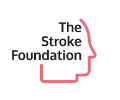A stroke is a serious medical condition that can lead to various complications. One of these complications can be vision problems, which can significantly impact a person’s quality of life. In this article, we will discuss the different types of vision problems that can occur after a stroke and how they can be managed.
Types of vision problems after a stroke
- Visual field loss: This is a common vision problem after a stroke, which can occur in one or both eyes. Visual field loss can be categorized as homonymous hemianopia or quadrantanopia, which means loss of vision in half or one-quarter of the visual field, respectively.
- Double vision: Double vision, also known as diplopia, is another vision problem that can occur after a stroke. This condition can make it difficult to perform everyday tasks, such as reading, driving, or even walking.
- Reduced visual acuity: A stroke can also cause a person’s visual acuity to decrease, making it difficult to see objects clearly. This condition is called amblyopia.
- Visual processing problems: A person may experience difficulties with visual processing after a stroke, which can lead to difficulty recognizing faces or objects or interpreting visual information.
Management of vision problems after a stroke
- Eye patching: Eye patching can be used to manage visual field loss after a stroke. An eye patch can help to improve the vision in the affected eye by allowing the brain to adjust to the loss of vision in the other eye.
- Prism glasses: Prism glasses can be used to manage double vision after a stroke. These glasses work by redirecting the images in the affected eye so that they are aligned with the images in the healthy eye.
- Vision therapy: Vision therapy involves exercises and techniques that can help to improve visual processing after a stroke. These exercises can be done with the help of a vision therapist.
- Magnifying devices: Magnifying devices, such as magnifying glasses or electronic magnifiers, can be used to manage reduced visual acuity after a stroke. These devices can help to magnify objects so that they can be seen more clearly.
Conclusion
Vision problems after a stroke can significantly impact a person’s quality of life. It is important to understand the different types of vision problems that can occur after a stroke and how they can be managed. If you or someone you know has experienced a stroke and is experiencing vision problems, it is important to seek the advice of a healthcare professional to determine the best course of treatment. With the right treatment and management, vision problems after a stroke can be effectively managed, allowing individuals to maintain their independence and quality of life.




